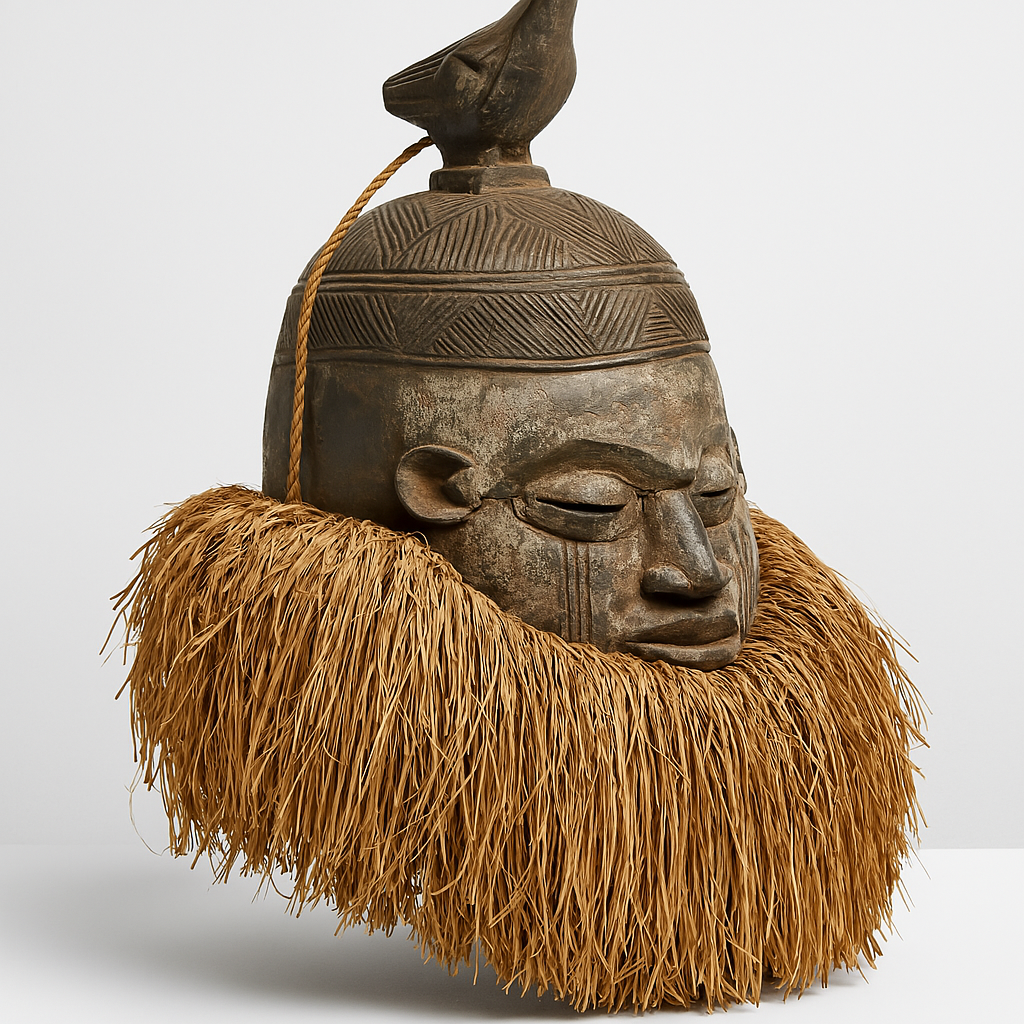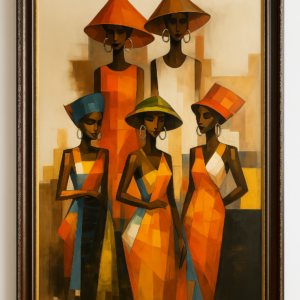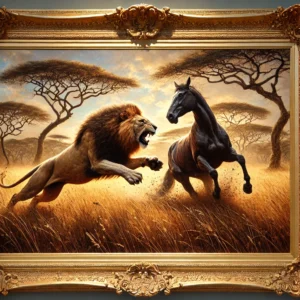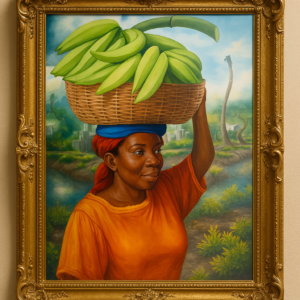“Mbali Ya Mvua,” translated as “Ancestor of Rainsong” from a poetic blend of Zulu and Swahili, is a ceremonial African helmet mask of profound ancestral presence, storytelling, and symbolism. Evocative and sculpturally rich, this masterwork likely hails from the traditions of the Songye or Chokwe peoples of Central Africa, where masquerade culture and sculptural expressions are deeply intertwined with identity, cosmology, and ancestral veneration.
This piece is visually commanding, defined by a robust wooden form with a monumental headdress, geometric patterning, and a crown-like carved bird perched at its summit. Surrounding the lower part of the mask is a voluminous collar of dried raffia—a fiber chosen not only for its traditional value but also for its dynamic movement during ceremonial dance. Together, these elements form a complete narrative mask, used in rituals invoking rain, abundance, ancestral memory, or transitional rites.
At the top of the mask, the bird figure serves as a central totemic guardian. In many African traditions, birds symbolize the soul’s ability to traverse between worlds—the human and the spiritual, the present and the ancestral. The bird atop Mbali Ya Mvua appears vigilant, almost meditative, anchoring the mask in the metaphysical concept of sight beyond sight. Whether representing a dove, hen, or ancestral messenger, its placement at the crown denotes divine insight and the sacred power of watchfulness.
The dome-like head structure is adorned with finely carved linear motifs—chevrons, hatchings, and concentric lines—that resemble woven hairstyles or symbolic scarification. These details are not merely decorative; they encode ancestral identity, rank, clan affiliation, or life path. The duality of smooth planes and textured bands gives the mask rhythm, tactility, and a visual vibration meant to harmonize with movement, music, and voice during performances.
The facial features are stoic and balanced: heavy-lidded eyes, a squared nose, and open rectangular mouth—all shaped to project a calm yet commanding energy. The eyes, half-closed, communicate meditation and inner vision—a quality essential for a spiritual conduit. The mouth, slightly open and reinforced with vertical ridges, may symbolize breath or song—elements that activate ritual space and invite ancestral presence. The ear openings are discreetly hollowed, indicating that the performer must be attuned to both physical sound and spiritual messages.
One of the most stunning aspects of Mbali Ya Mvua is the thick collar of raffia that frames the entire base. Dyed a rich golden brown by age and traditional methods, this raffia once moved like rainfall as the mask bearer danced—creating an audible rustling sound akin to wind through grass or the patter of early rain. It represents fertility, nature, and the cyclical flow of seasons. This type of raffia collar is also believed to veil the identity of the dancer, transforming them from human to spiritual being.
While helmet masks like this one were worn during specific ceremonies, they also served as protective spiritual armor. Among the Songye people, such masks were often associated with the Bwadi Bwa Kifwebe society, a secret group responsible for maintaining spiritual balance in the community. Masks could serve both protective and judicial roles, warning evil spirits away and enforcing communal law.
The surface of the mask exhibits a natural patina developed over time, revealing layers of earthen pigment, smoke treatment, and handling. Faint traces of white and red ochre suggest symbolic coloring related to healing, transformation, or elemental alignment. The mask’s condition reflects authenticity and use, making it not just a decorative item, but a bearer of lived history.
Collectors, historians, and designers alike will find Mbali Ya Mvua to be more than just a visual object—it is an archive of movement, faith, and form. Whether placed in a cultural institution, high-end gallery, or sacred private space, it speaks of timeless ritual and African spiritual poetics. This mask doesn’t merely rest on a pedestal—it occupies spiritual space.
In modern interior settings, Mbali Ya Mvua becomes an extraordinary conversation piece—a powerful blend of ancestral wisdom and sculptural grace. It merges organic texture with sacred design and resonates with those drawn to authentic African heritage, ceremonial art, and sculptural legacy.





Reviews
There are no reviews yet.